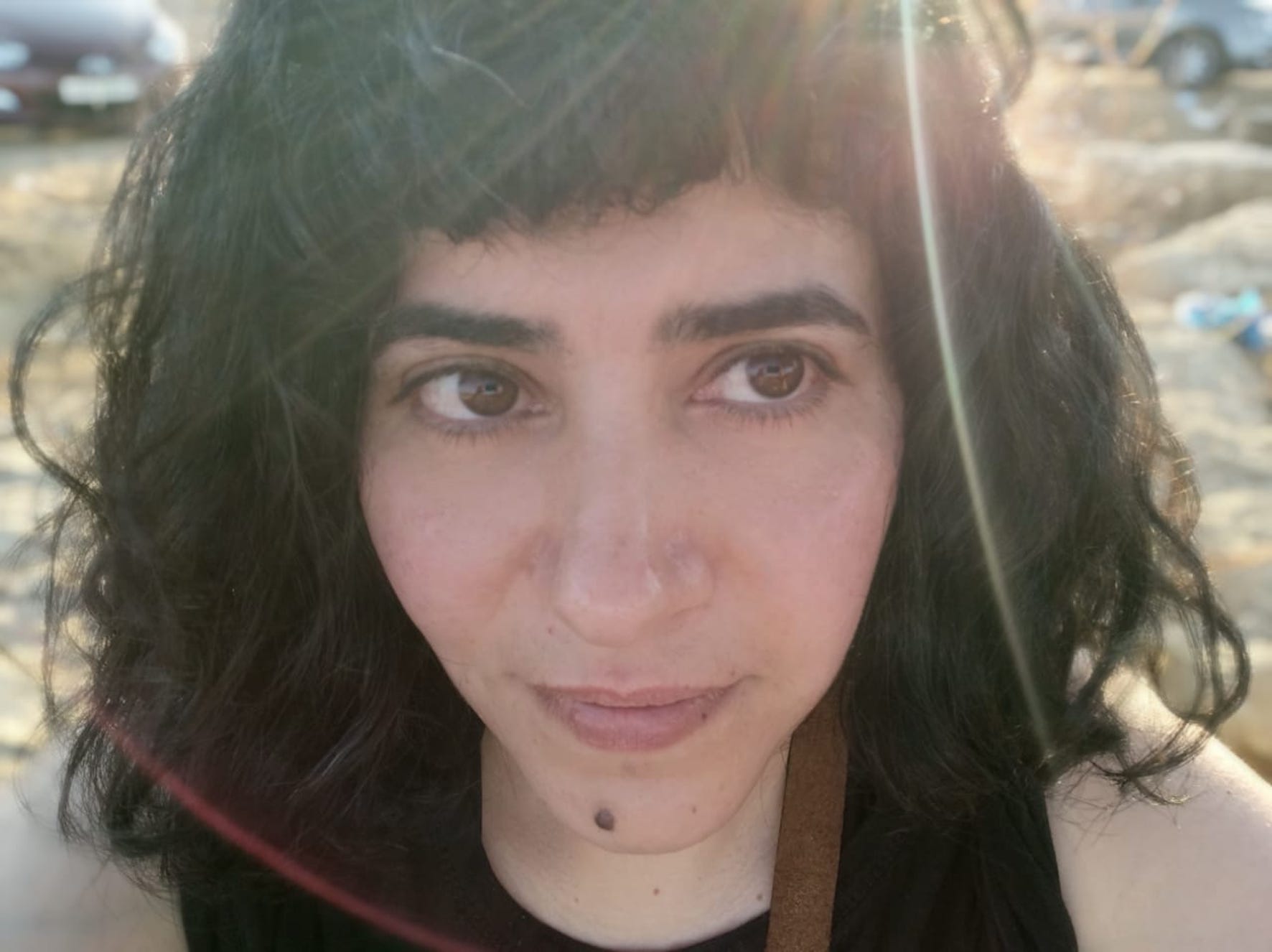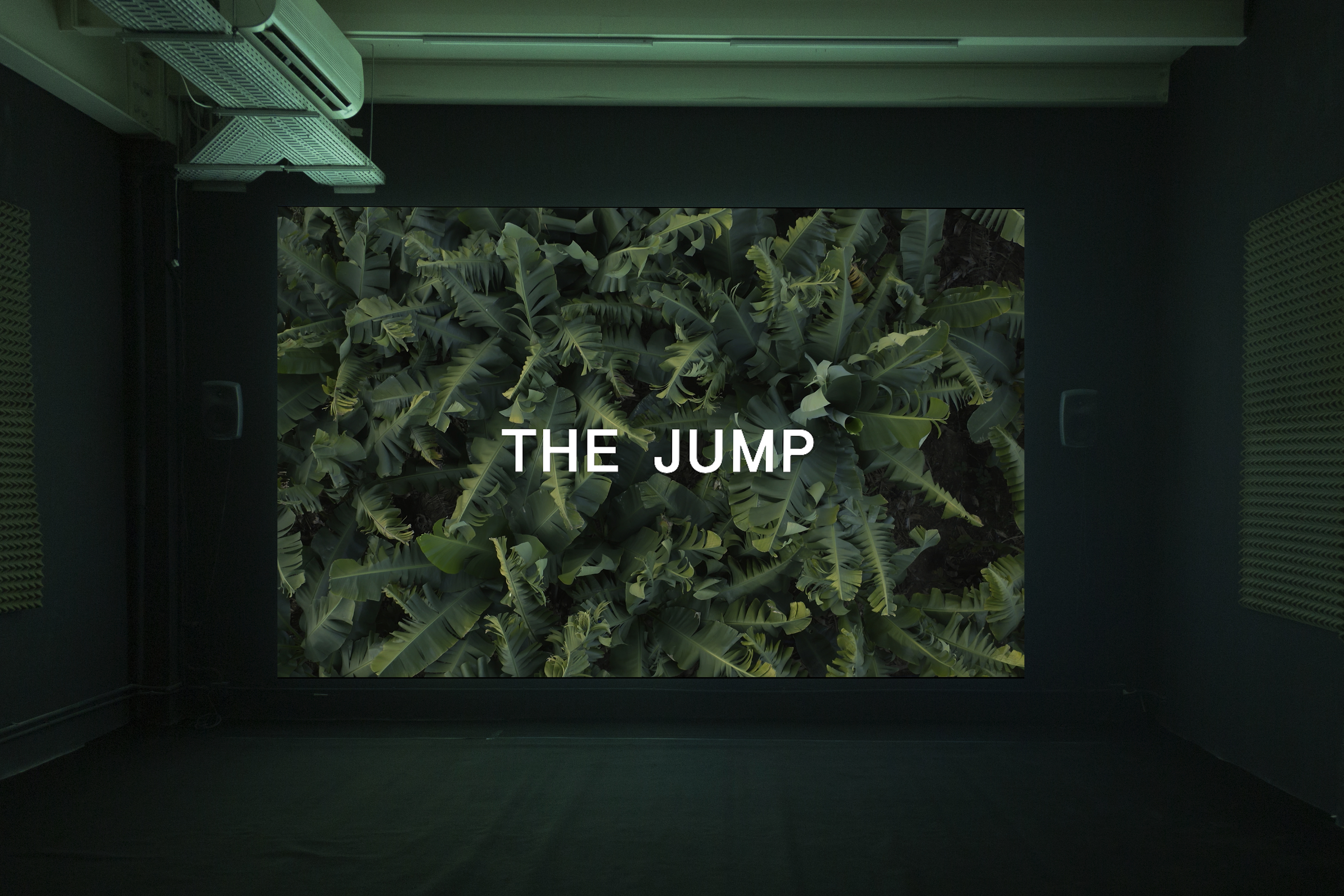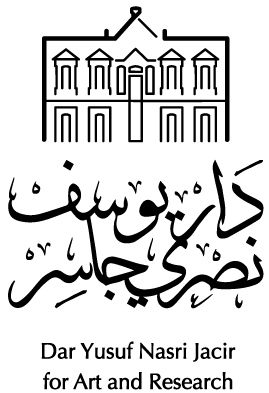Shuruq Harb
PalestineHosted by Aline Khoury
15 April – 20 May, 2021
Shuruq Harb is an artist, filmmaker and writer. She is the co-founder of several independent art initiatives such as ArtTerritories (2010-2017) and The River Has Two Banks (2012-2017). Her artistic practice focuses on online visual culture and traces subversive routes for the circulation of images and goods. Her film The White Elephant received the award for best short film at Cinema du Reel Festival in Paris, 2018, and was shortlisted for the Hamburg International Short Film Festival, 2019. Most recently she published her first short story “ and this is the object that I found ” (2020) at Mezosfera. Her solo exhibition at Beirut Art Center brings together for the first time several of her artworks in one exhibition. She is the recipient of the Han Nefkens Foundation – Fundació Antoni Tàpies Video Art Production Award (2019).
Ghost at the Feast
Welcome to this feast.
What is on the menu is a beast.
I write to you from Beit Jala, Bethlehem, where every day I wake to the sounds of the construction of the Israeli segregation wall. An uninterrupted sound drowned during the day by the laughter of children playing in the neighborhood, and the excessive honking of our road rage.
I tell myself I need to meditate to this sound. To keep hearing it. To remain conscious of it. To not let myself forget it as I try to go on my day. To not let it recede to the background.
I came here to this city to work on this exhibition. To carve out some distance from my own city, Ramallah, in order to communicate with you who are in Beirut.
When I say it that way, I realize the absurdity of it all.
Escape the fragility of one city by soaking in the vulnerability of another.
Most of these works have emerged from a restless effort on my part, over the last ten years, to come to a reckoning with my city, its changing urban topography, its status and symbolism. I would like to think I have created a portrait of my city through its ephemeral indexes –the everchanging nature of street signs and popular cultural imagery that find their way onto the facades of the city and into its virtual clouds.
I looked at names of people on street signage, faces adorning billboards and storefronts –they are images, names and signifiers of other places. The memories of others have become my way of claiming my own recollection of this place. Sometimes this appropriation reveals what is concealed, other times it expresses a disorientation.
It would be a mistake to confuse the place with the symbol.
I suppose that is particularly true of Palestine, the place and the symbol. The Israeli occupation has fragmented the landscape, reducing Palestine to a symbol, an idea, rather than a continuous reality or coherent body.
To accept fragmentation is to accept occupation. To accept that now every city, town, street, neighborhood has a distinct visual presence in which the occupation exercises its power, resulting in distinct mental and psychological symptoms.
In the mid 2000s, we started to refer to Ramallah as a ‘syndrome’. I remember how uncomfortable this made me feel because it implied a unique numbness to and disconnection from the rest of Palestine. As if Ramallah was some remote Island, a de facto capital of the Palestinian Authority. We can have Ramallah if we give up Jerusalem. As I make this exhibition, I have tried to think about this discomfort with more nuance.
It took me ten years to realize that the numbness of Ramallah is also part of the bigger picture of the occupation in Palestine. I am sad that my city is not so heroic, it is doozy and confusing. I realize now that Ramallah also needs to be re-claimed, to reject Ramallah is to accept that the Israelis have succeeded.
By looking at the pavements, the peripheral, I was trying to remind the city of its actual streets. I wanted a chance to dance amongst its ghosts, which have refused to bow down and move on, these ghosts who have triumphed over death.
When a symbol is emptied of meaning, it becomes a ghost; a reference to that which has been lost; a stubborn trace of what has been condemned to be made invisible. It is a comforting kind of melancholia to realize that you have been invited to a feast amongst these ghosts.
Relentless auras trying to speak of that which has been lost, a summoning to recognize their potential to be re-invoked.
But there is no magic, nothing can code the contradictions of reality. Here everything is stripped to its basics, a mirror to see beyond that which is already known, an acknowledgment that these familiar symbols are nothing if not spectral.
Ghost at the Feast was produced by Beirut Art Center with additional support from Al- Harah Theater and Dar Jacir for Art and Research.


